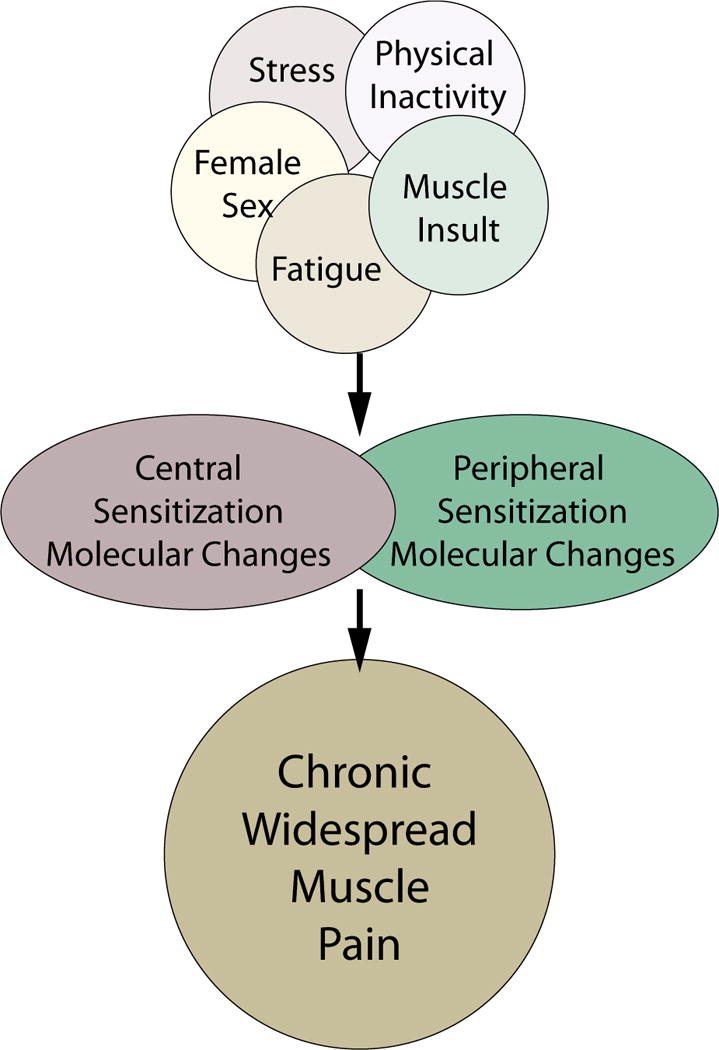Figure 1.

Schematic diagram outline factors that contribute to the development of widespread and long-lasting muscle pain. We propose that combination of multiple stressors result in peripheral and/or central sensitization to produce widespread and long lasting muscle pain. These stressors can include multiple muscle insults separated in time and space, or they include physical inactivity combine with muscle insult, fatigue combined with muscle insult, or stress combined with muscle insult. Further sex influences the development of chronic muscle pain with females more likely to develop chronic muscle pain. Molecular and cellular changes can occur anywhere along the nociceptive pathways from the nociceptor to the cortical neuron and are likely involved in driving the chronic muscle pain and hyperalgesia. Lastly, the peripheral and central pathways can interact with each other to result in enhanced chronic pain.
